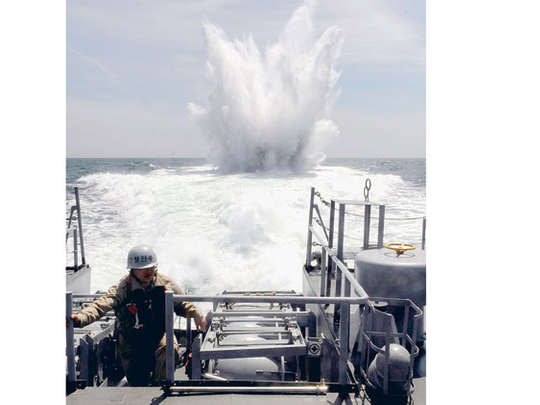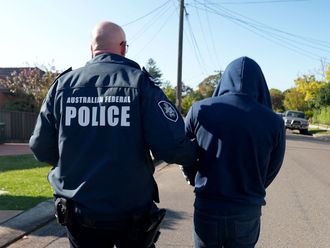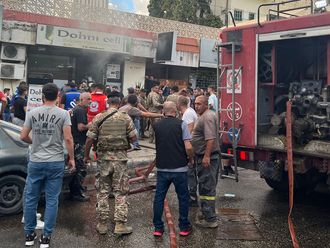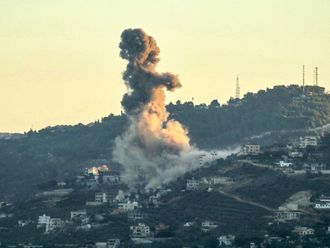
Seoul, South Korea: South Korean warships fired guns and dropped anti-submarine bombs in a large-scale military exercise yesterday, a week after Seoul accused North Korea of shooting a torpedo that sank a navy frigate in March.
The military pushed ahead with the show of force despite warnings from the North that the exercise would bring the peninsula to the brink of war.
North Korean reaction was swift. It declared it would scrap an accord with the South designed to prevent armed clashes at their maritime border, and warned of "immediate physical strikes" if any South Korean ships enter its waters.
A multinational team of investigators announced May 20 that a North Korean torpedo brought down the Cheonan, killing 46 sailors. Seoul announced a series of punitive measures, including slashing trade and resuming anti-Pyongyang propaganda over radio and loudspeakers aimed at the North.
North Korea has denied attacking the Cheonan on March 26 and said it would abandon a 2004 accord that covered disputed western waters where the Koreas have fought three bloody sea battles since 1999 and near where the Cheonan sank.
Deteriorating ties
Inter-Korean political and economic ties have been steadily deteriorating since the February 2008 inauguration of South Korean President Lee Myung-bak, who vowed a tougher line on the North and its nuclear programme. The sinking of the Cheonan has returned military tensions — and the prospect of armed conflict — to the fore.
Off the west coast, 10 warships, including a 3,500-tonne destroyer, fired artillery and other guns and dropped anti-submarine bombs during a one-day exercise to boost readiness, the navy said.
South Korea also is planning two major military drills with the United States by July in a display of force intended to deter future aggression by North Korea, according to South Korea's Joint Chiefs of Staff.
General Walter Sharp, chief of the 28,500 American troops in South Korea, said the United States, South Korea and other members of the UN Command "call on North Korea to cease all acts of provocation and to live up with the terms of past agreements, including the armistice agreement".
The US fought on the South Korean side during the 1950-53 Korean War, which ended in an armistice, not a peace treaty. North Korea has long demanded a permanent peace deal.
The prospect of another eruption of serious fighting has been constant on the Korean peninsula since the Korean War ended.
But it had been largely out of focus in the past decade as North and South Korea took steps to end enmity and distrust, such as launching joint economic projects and holding two summits.
The sinking of the warship, however, clearly caught South Korea — which has a far more modern and advanced military than its impoverished rival — off guard.
"I think one of the big conclusions that we can draw from this is that, in fact, military readiness in the West Sea had become very lax," said Carl Baker, an expert on Korean military relations at the Pacific Forum CSIS think tank in Honolulu, calling it nothing short of an "indictment" of Seoul's preparedness there.
Now, South Korean and US militaries are at pains to warn the North that such an embarrassment will not happen again.
South Korean media reported yesterday that the US-South Korean combined forces command led by Sharp raised its surveillance level, called Watch Condition, up a level from 3 to 2. Level 1 is the highest.
The increased alert level means US spy satellites and U-2 spy planes will intensify their reconnaissance of North Korea, the JoongAng Ilbo newspaper said, citing an unidentified South Korean official.
The South Korean and US militaries would not confirm any changes to the alert level.
It would be the first change since North Korea carried out a nuclear test in May 2009, a South Korean Joint Chiefs of Staff officer said on condition of anonymity, citing department policy.












